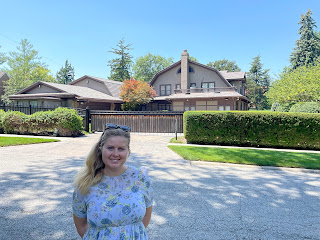Is It Time to Buy the Dip?
“Buy the dip” the words are thrown around on Facebook and other social media platforms. You might read these words and wonder what it means. What I have noticed is that every time the stock (or crypto) market dips a bit, some random person encourages followers to buy the dip. And this time the market dipped and the it dipped some more. And then even more. So, to not be in a situation where you’re in doubt if it’s the right time to buy that dip, here’s some information that can help you make a judgement on your own.
As value investors we actually like to buy the dip. But we're different than most other investors because we are zooming in on one business and we've studied the business using our checklist before we even think about buying. And when we buy, we like to buy it at a "margin of safety" - or to use a more popular term: "buy the dip". In my investing course I dive deep into these topics, and taking the course is the first way to educate yourself in order to make intelligent investing decisions.
Advice from Gurus
Another thing you can do to educate yourself is to follow guru investors' advice. Warren Buffett’s teacher Benjamin Graham recommended buying stocks with a P/E Ratio of maximum 15.
P/E is a fancy term that simply means the stock price compared to the earnings of the business. The earnings are a company’s profits after tax. P/E is a number that you can monitor on individual stocks ex. in your Apple Stocks app or on Yahoo Finance and on many other websites. When a P/E is above 30, the stock is considered “overpriced”.
Tip: check your favorite stock right now. Find the P/E – is it above or below 30?)
The P/E is easy to find. If you want to buy the dip, then go for stocks with a P/E of 15 or close to 15.
Other recent data supports Ben Graham’s advice. The so-called CAPE Ratio, created byRobert Shiller, professor at Yale University, is a formula tracking the P/E Ratio (adjusted for inflation) of the largest american businesses back through the years. The formula is mention in his book "Irrational Exuberance" (advertising link). It's tracking the adjusted P/E of the S&P500 Index.
 |
| The CAPE Ratio is mentioned in this book |
The S&P 500 is an index tracking the 500 largest companies listed on the stock exchanges in the US. In the S&P 500 index is companies like Apple, Microsoft, Amazon and the like. Historic data on these 500 companies can give you some information about when these important US businesses experienced an actual dip. For example, the CAPE Ratio also known as the Shiller P/E Ratio can give you insights into reasonable levels of the stock index. The historical average P/E according to Shiller’s formula is 16,95 – close to Graham’s preference of 15. You can find an easy digestible chart on multpl.com/shiller-pe and the raw data is downloadable on Yale's website.
Keep an eye on the Shiller P/E Ratio and based on the information in this article as well as the chart data, you can decide when you’re comfortable "buying the dip". Remember to use the checklist first to ensure you're buying quality a stock. This is my third input to how you can educate yourself to know, when the dip is in an area, where you're less likely to experience that the market keeps dipping.
Disclosure: This article contains affiliate links to Amazon, meaning I’ll get a commission if you make a purchase through my links, at no cost to you. Please read my disclosure for more info.







Comments
Post a Comment